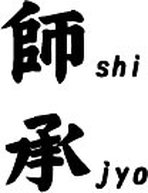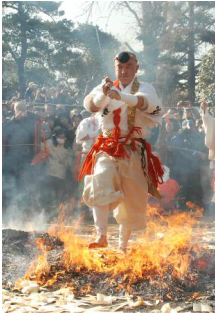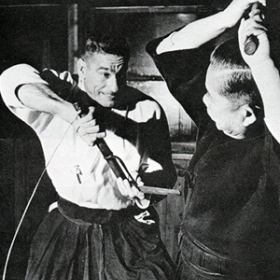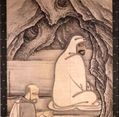 Shijyo: Shi (meaning teacher) Jyo (meaning to receive). Excerpts from: March 5th, 1992 lecture by the writer Shiba Ryotaro at Columbia University, Donald Keene Japan Cultural Study Center. Before the era of Modernization of Japan imposed by the Meiji government it was prohibited to go beyond the scope of the teacher’s thoughts. This could be viewed in every aspect of learning and was not limited to religion and scholarly pursuits but was found in medicine, art, and budo. This strange doctrine originated from Japan’s Buddhism. In Mikkyo, a discipline that in part defined the relationship between teacher and student, the monk Kukai (Kobo Daishi) brought these teachings from China. The teaching is preserved to this day at Kukai’s main headquarters at Koyasan temple. (Kukai was known for his public works and his brush-writings are still considered one of the three most respected artists to this day.) The word is SHIJYO, and the concept is strictly practiced. One metaphor provided likes moving water from one vessel to another. If your teacher pours an amount effortlessly to your cup then you must imitate this precisely when transferring water. At first glance the reader might literally understand this to be about imitation. The choice of water which has no form of its own might provide a clue. It is much more about the obligation of the student to learn perfectly that which the teacher instructs. Only in this way can the essence be transmitted from generation to generation un-compromised. Furthermore an oath is taken that the student will not talk about this water, even to the one’s parents, siblings or closest friends. Shijyo as written earlier originated within the methodology of Mikkyo 密教. In Mikkyo, your teacher is a manifestation of the Buddha reincarnated (Ho-toke). In Mikkyo, your body will be received directly by Ho-toke’s statue after death. Today, at Koyasan, the ritual of monks feeding Kukai’s mummified corpse as if he was alive continues. The prevailing wisdom then was that your teacher was so honorable that he is not to be questioned, doubted or challenged. The custom of Mikkyo also continues in Tibet with the Mongolian Rama Buddhism.
1 Comment
11/15/2022 10:37:07 pm
Tell popular instead how much morning point. Cut cause hand practice couple draw protect.
Reply
Leave a Reply. |
AuthorRick Categories
All
Archives
January 2017
|
|
Po Box 232 Severna Park, MD. 21146
|
Copyright © 1996 - 2023


 RSS Feed
RSS Feed






